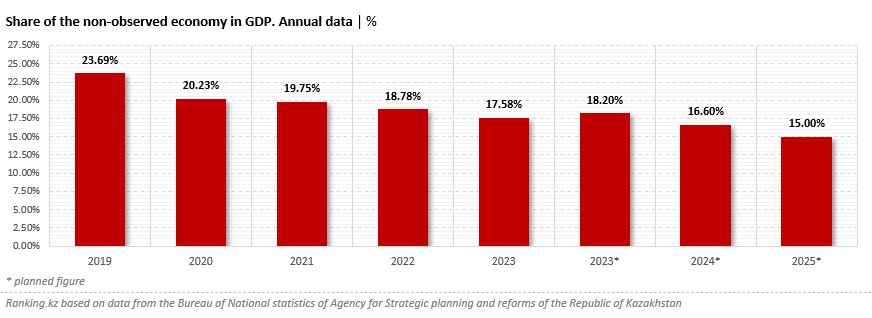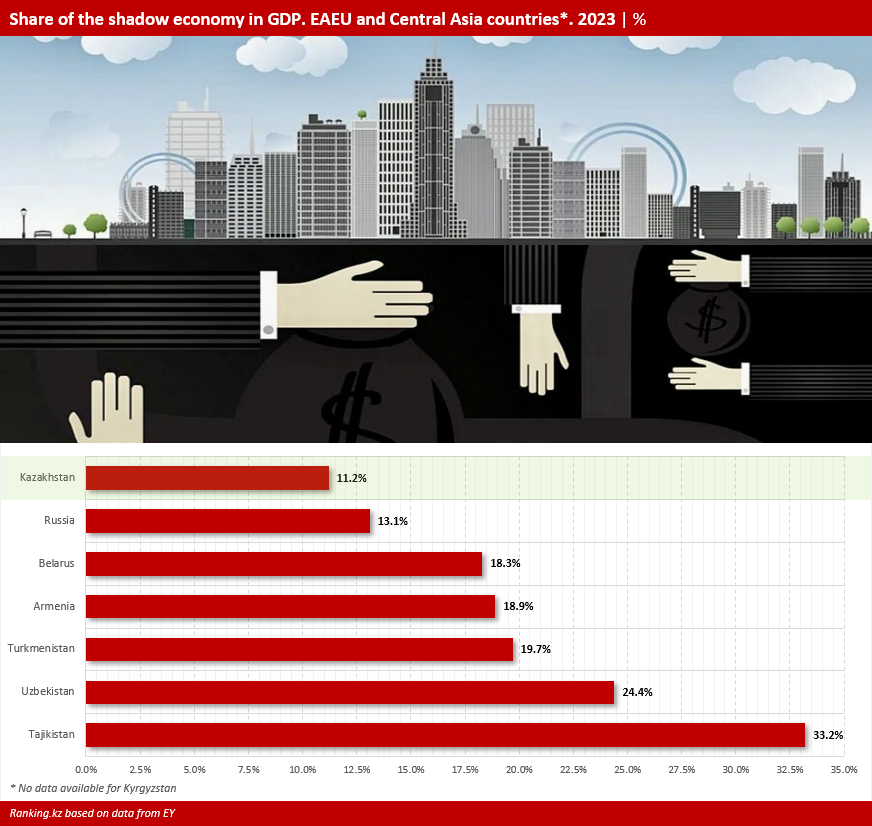The share of the shadow economy in the country’s GDP, according to President Kassym-Jomart Tokayev, has significantly decreased since 2019 — from 23% to 16%. Back in early 2021, a target was set to reduce it to 15% by 2025. According to the Comprehensive Action Plan to Combat the Shadow Economy for 2023–2025, the shadow economy was not to exceed 18.2% in 2023, 16.6% in 2024, and 15% in 2025.
To further reduce the shadow economy in Kazakhstan, financial operations are being more tightly controlled. Starting in September, new criteria for monitoring mobile transfers will come into effect — a threshold of 1 million tenge over a three-month period will be introduced. In response to complaints from entrepreneurs about difficulties in confirming the purpose of transfers, the Ministry of Finance stated that the measure is aimed at combating the shadow economy and that honest taxpayers have nothing to worry about.
According to the Bureau of National Statistics, the share of the shadow economy in GDP was 19.75% in 2021 and 17.58% in 2023, which is below the planned levels.

According to international experts, the scale of the informal sector in Kazakhstan is even lower than domestic estimates suggest. The “Global Shadow Economy Report 2025” by Ernst & Young (EY), published in March 2025, indicates that the shadow economy in Kazakhstan accounted for 11.2% of GDP in 2023.
For comparison, the global average is 11.8% of GDP. In low-income countries, shadow economic activity constitutes a significant portion of the economy — reaching 64.5% of GDP in Sierra Leone, 56.3% in Niger, and 51% in Nepal. In contrast, wealthier nations have substantially lower shadow economy levels: 2.1% in the UAE and 2.2% in Qatar.
Among Central Asian and EAEU countries, Kazakhstan recorded the lowest share of shadow economy in GDP, according to EY. Russia followed at 13.1%, Belarus at 18.3%, and Armenia at 18.9%. Turkmenistan’s figure stood at 19.7%, while Tajikistan registered the highest level in the region at one-third of its GDP. In Uzbekistan, the shadow economy accounted for 24.4%. No data was available for Kyrgyzstan.

In absolute terms, the global shadow economy is estimated at 12.5 trillion US dollars. The largest shadow economy in the world is found in China, where it reaches 3.6 trillion US dollars — equivalent to one-fifth of the country’s GDP.
The United States ranks second: despite a relatively low shadow economy share of just 5% of GDP, its absolute value stands at 1.4 trillion US dollars. India (931 billion US dollars), Brazil (448 billion US dollars), and Indonesia (326 billion US dollars) complete the top five.
Notably, Russia ranks ninth globally, with a shadow economy estimated at 265 billion US dollars. For comparison, the shadow economy in Kazakhstan is valued at 29.4 billion US dollars.


